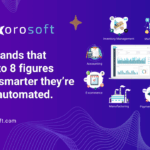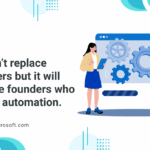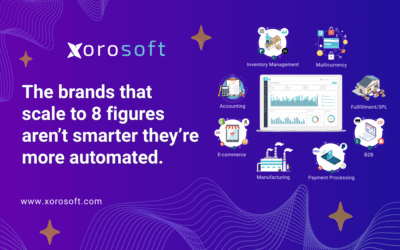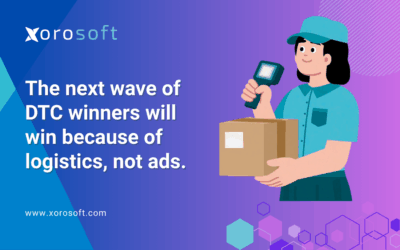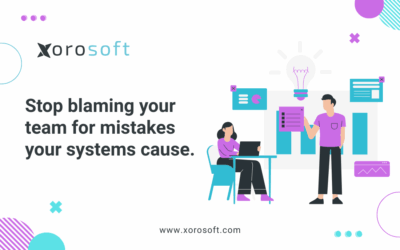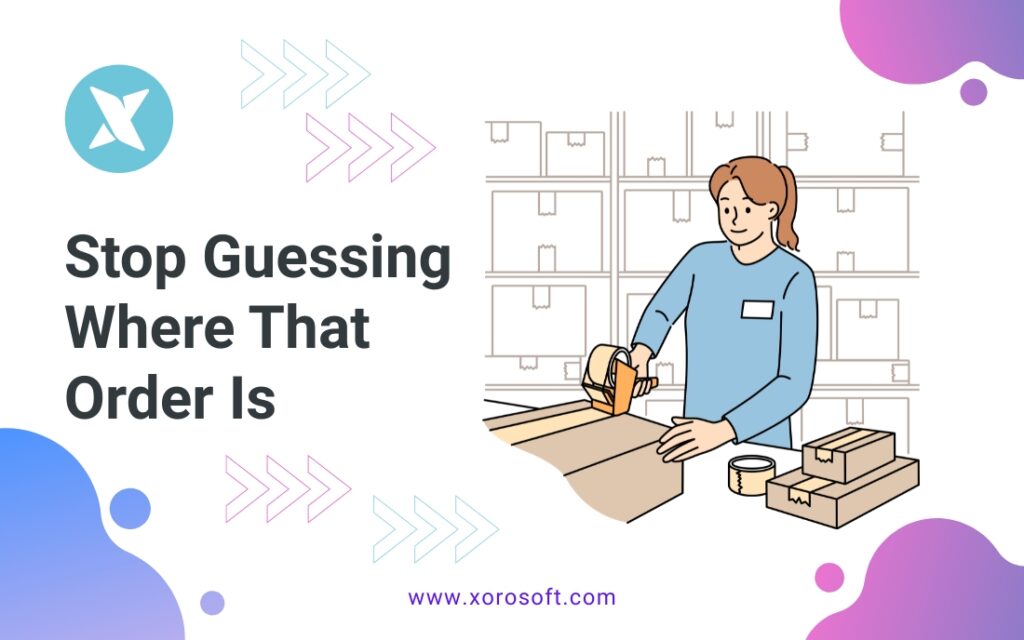
Customers Expect Answers. You Deserve Control.
Every fast-scaling business needs an order tracking ERP that tells them exactly where each order stands—without the daily chaos.
A customer emails: “Where’s my order?” You pause. Then begins the scramble—checking Shopify, messaging the warehouse, opening inventory spreadsheets, toggling between shipping portals.
Still no clue.
Eventually, you find it: the order was either stuck in the wrong warehouse, delayed due to mismatched inventory, or already shipped but untracked. Meanwhile, your customer’s trust erodes, and your team wastes another 20 minutes chasing basic answers.
This isn’t just inefficient—it’s unacceptable. Fortunately, it’s also fixable. And with the right ERP, it’s easily preventable.
Fulfillment Chaos Is Hurting Your Bottom Line
Let’s look at what causes this confusion in the first place.
As businesses grow, they often end up with a patchwork of disconnected systems:
-
Shopify or Amazon for storefronts
-
A third-party logistics (3PL) system for fulfillment
-
Spreadsheets for tracking inventory
-
Bolt-on tools for warehouse and order management
-
QuickBooks for accounting
These tools rarely talk to each other in real time. Instead, they rely on time-consuming syncs and manual updates.
For example, your warehouse might ship an item, but your sales team doesn’t see that update. Alternatively, inventory may be sold out on Amazon but still listed on your site. In many cases, when a customer cancels an order, it won’t reflect in your accounting platform until someone updates it manually—if they remember to do so.
Because of this, fulfillment gets messy:
-
Overselling happens due to slow inventory updates
-
Orders are fulfilled late—or incorrectly
-
Staff members are forced to “chase down” order statuses
-
Customers experience delays without communication
-
Returns and exchanges often create confusion or are lost in the shuffle
Eventually, your operational costs rise, your team burns out, and customers begin to churn. Additionally, your growth gets bottlenecked by system limitations. Therefore, fixing this inefficiency must become a top priority.
Why Manual Tools Fail as an Order Tracking ERP
The root cause is fragmentation—your systems simply don’t speak the same language. Instead of centralizing your data, you’re constantly bouncing between platforms, emails, and manual workarounds.
Why does this continue to happen?
Because most traditional ERPs and legacy solutions weren’t designed for real-time, multi-channel order visibility. They rely on:
-
Batch-syncs instead of live updates
-
Fragile, custom-built integrations
-
Delayed reconciliation
-
Manual data entry or exports between tools
So, when your customer service team says, “Let me check and get back to you,” it’s not their fault. They don’t have access to real-time order information.
Moreover, bolt-on apps may seem like a solution. However, they often create even more silos. As a result, your operations become increasingly difficult to scale. Consequently, the chaos only multiplies over time.
In fact, many teams end up spending more time fixing integrations than fulfilling orders.
The Missing Link: A Real-Time Order Tracking ERP
If your team is still toggling between tabs or refreshing spreadsheets to track what’s shipping, what’s delayed, and what’s gone missing—it’s time to reassess your systems.
The answer lies in adopting a unified order tracking ERP that connects:
-
Sales channels (Shopify, Amazon, B2B, EDI)
-
Real-time inventory tracking
-
Fulfillment workflows
-
Warehouse operations
-
Accounting and invoicing
When your ERP becomes the backbone of operations, order data is instantly accessible across every department.
Here’s how that transforms your business:
-
Order statuses update instantly across all systems
-
Inventory reflects true stock levels across channels
-
Fulfillment triggers occur automatically
-
Cancellations and returns sync end-to-end
-
Everyone works from a shared version of the truth
Furthermore, this level of automation saves hours each week and reduces costly errors. In turn, your customers receive accurate updates and faster deliveries. As a result, your team operates with more confidence.
Not only that, but your reporting and reconciliation processes become dramatically easier.
How Xorosoft Delivers Real-Time Order Tracking
Xorosoft ERP was built for fast-scaling manufacturers, distributors, and e-commerce brands. Specifically, it eliminates order confusion and system fragmentation.
Let’s break down how it works:
🔁 Live Order Sync Across Channels
Xorosoft connects natively with Shopify, Amazon, EDI platforms, and 3PLs. Orders sync in real time. This ensures zero delays, no duplicates, and no finger-pointing. As a result, your team responds faster, and customers stay informed.
Additionally, inventory levels across locations are always accurate.
📦 Native Warehouse Management System (WMS)
Xorosoft includes a powerful WMS built into the platform—no third-party bolt-ons required:
-
Barcode-based picking and packing
-
Real-time inventory and bin-level tracking
-
Instant warehouse-to-ERP updates
Because the WMS is native, warehouse activity flows directly into your ERP. This eliminates lag and improves fulfillment accuracy. Additionally, it simplifies warehouse operations across locations.
In comparison to add-on WMS tools, this approach is far more efficient.
⚙️ Automation From Order to Invoice
Xorosoft automates the entire lifecycle:
-
Order placed → Inventory reserved
-
Warehouse receives picking instructions
-
Order ships → Invoice sent → Payment recorded
-
All updates visible in real time
Notably, this end-to-end automation removes the need for spreadsheets or follow-ups. Instead, your team can focus on scaling operations.
In other words, your backend starts running itself.
📊 One Platform for Total Visibility
Sales, fulfillment, and accounting teams all see the same data. This means:
-
Less confusion
-
Faster decisions
-
No duplicate entries
Moreover, leadership gains a 360° view of business performance at any moment. As a result, alignment becomes effortless.
Consequently, decisions are made based on facts—not assumptions.
🔌 Integrations That Just Work
Xorosoft includes 100+ built-in integrations:
-
Shopify
-
SPS Commerce EDI
-
QuickBooks, NetSuite, and more
-
3PL and shipping platforms
Because the system is API-first, connecting your tech stack is seamless. In fact, most teams complete setup in weeks, not months. Therefore, you can get value faster.
Equally important, these integrations don’t break with every update.
🏆 G2 Ranked: Easiest ERP to Use
-
#1 in Ease of Use on G2
-
Listed as a High Performer in ERP
-
Available now on the Shopify App Store
If you’re tired of overcomplicated systems and unreliable workarounds, Xorosoft offers a simpler path forward. And importantly, it doesn’t require months of training.
In contrast to legacy platforms, it’s truly built for speed.
Why an Order Tracking ERP Replaces Spreadsheets
Every hour your team spends chasing down orders is time lost.
Every spreadsheet patch or delayed update introduces risk. And every system that doesn’t talk to the next one adds overhead.
Instead of living in chaos, you can run a business where:
-
Orders move automatically from sale to shipment
-
Inventory is always accurate
-
Your team never says “I don’t know where that order is” again
With Xorosoft, you finally get peace of mind—and your customers get the experience they expect. Meanwhile, your backend becomes leaner, faster, and more scalable.
Even better, your staff won’t waste time repeating manual steps.
